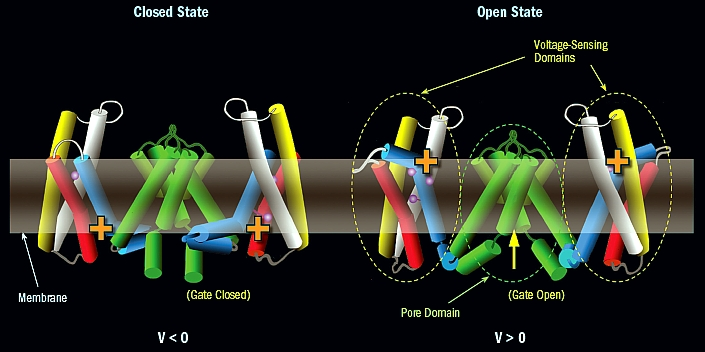Voltage-dependent ion channels
In voltage dependent ion channels, the probability of opening is customized by the membrane potential. This is attained through a voltage sensor which detects the voltage and transfers its energy to the pore to control its gate. The Voltage dependent calcium channels (VDCC) is a group of voltage-gated ion channels found in excitable cells (example, muscle, neurons, glial cells, etc.) with a permeability to the ion Ca2+. These channels are to some extent permeable to sodium ions, therefore they are also known as Ca2+-Na+ channels, however their permeability to calcium is about 1000-fold bigger than to sodium under normal physiological conditions. In the physiologic or resting membrane potential, the VDCCs are generally closed.

Figure:Diagram of the function of a voltage-gated ion channel.
They are activated at depolarized membrane potentials and this is the source of the "voltage-dependent" epithet. The Activation of particular VDCCs permits Ca2+ entry into the cell, that, depending on the cell type, outcomes in muscular contraction, the excitation of neurons, up-regulation of gene expression, or discharge of hormones or neurotransmitters.